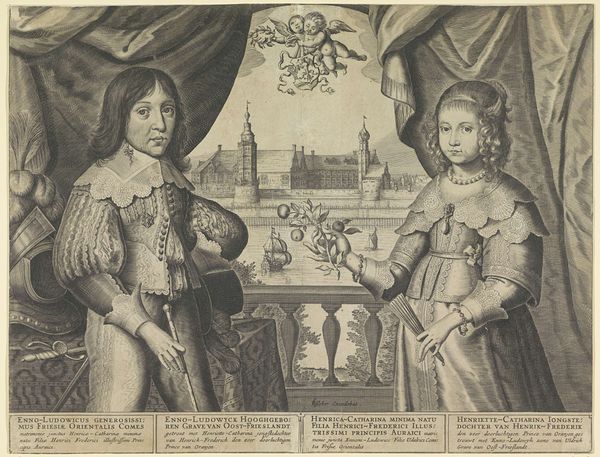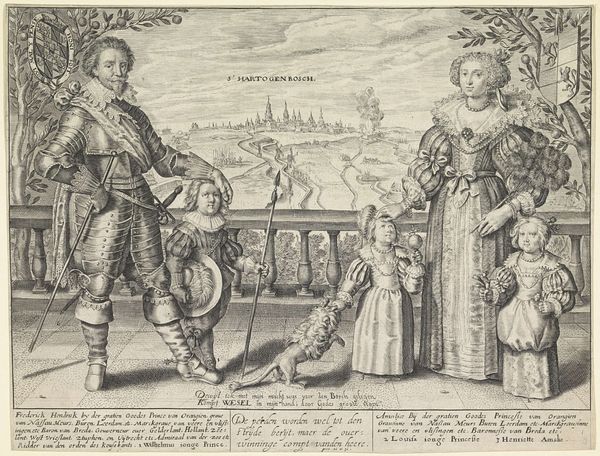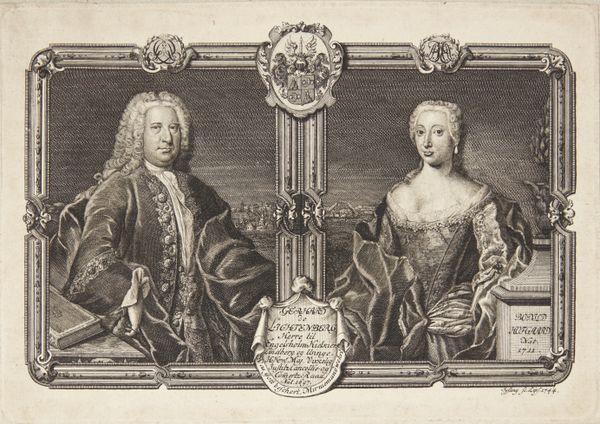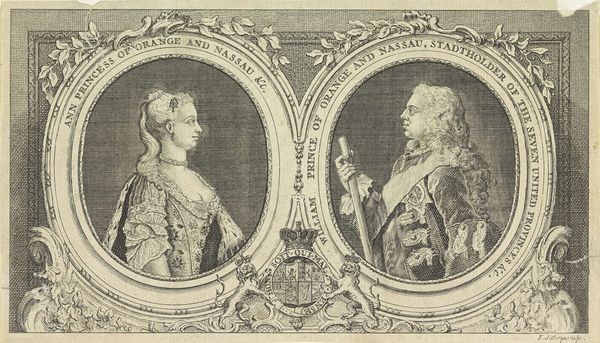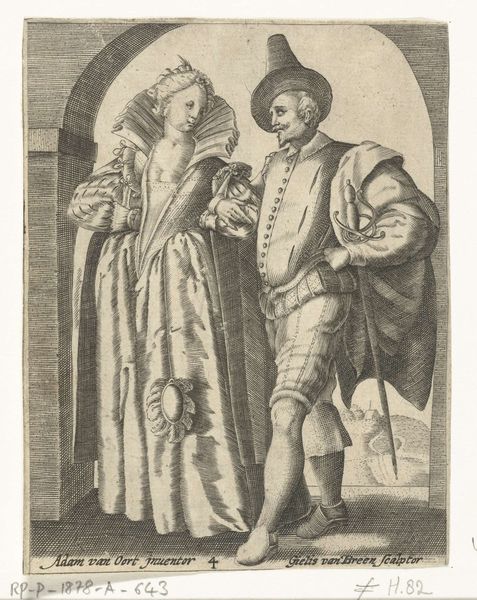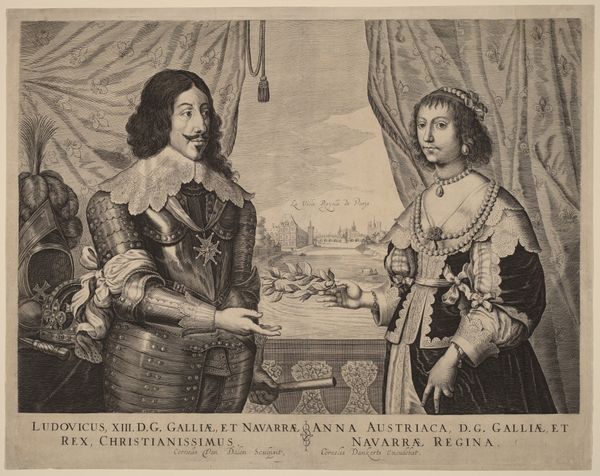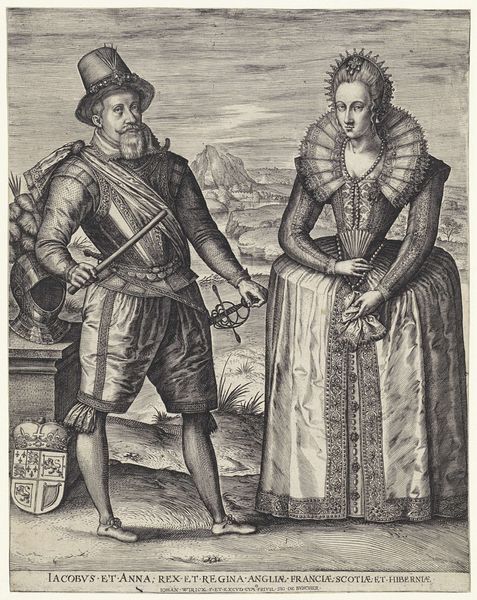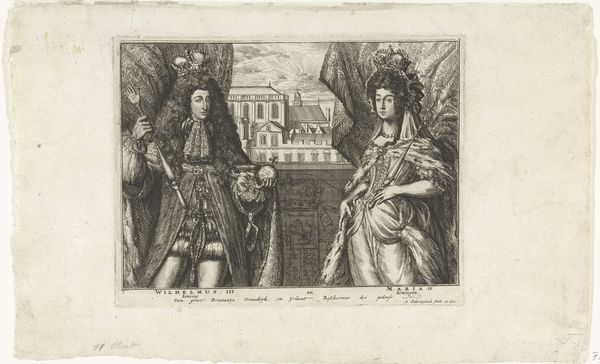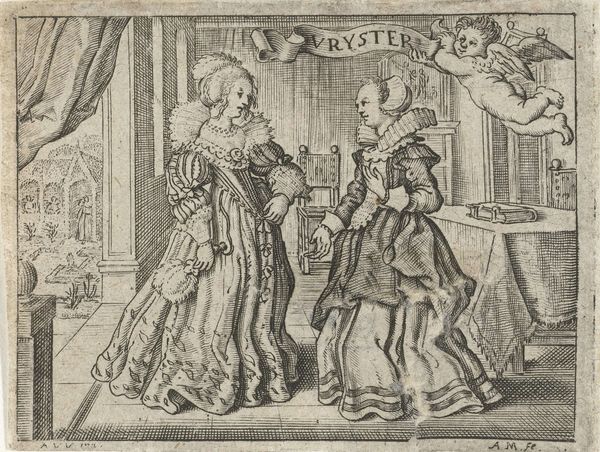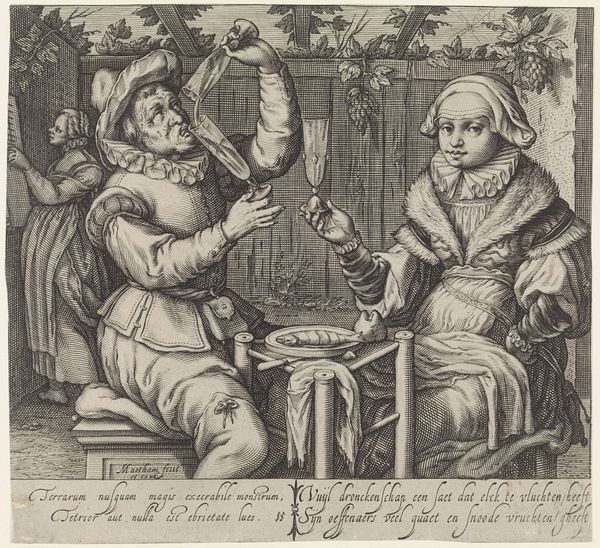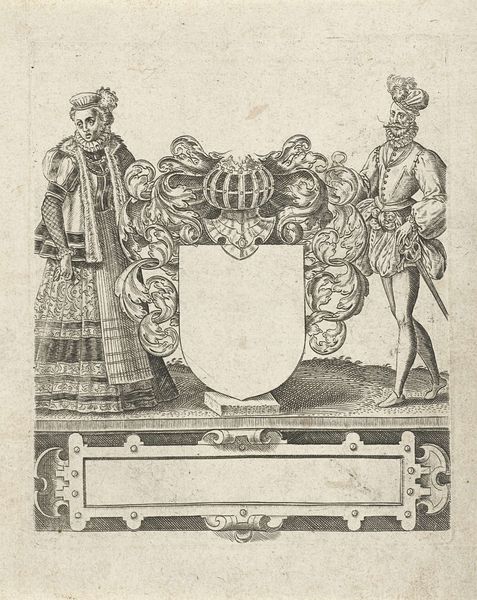
print, engraving
#
portrait
#
baroque
# print
#
old engraving style
#
history-painting
#
engraving
Dimensions: height 258 mm, width 307 mm
Copyright: Rijks Museum: Open Domain
Curator: Let’s spend some time contemplating this print entitled, "Portret van Willem II, prins van Oranje, en Maria Henrietta Stuart," created in 1641. It now resides in the collection of the Rijksmuseum. Editor: Well, my first impression is this engraving feels surprisingly...staged. Like two porcelain dolls politely placed side by side on a shelf! It's an image carefully constructed to communicate power, but it reads as a tad...stilted to modern eyes. Curator: That impression is valid, considering the social function and the means by which the print was made. Engravings like this one weren't simply decorative; they served as vital political tools. Their creation and distribution reflect broader societal relationships: power, wealth, class. Editor: Ah, so it was like Instagram for the elite of the 17th century? Got to broadcast the alliance. A visual PR campaign almost! But look at Willem's expression. There is a definite coolness! It's the demeanor of someone well aware of his elevated status in society, wouldn't you say? Curator: I do, and his and Maria's elegant attires exemplify an economy of lavish excess; that massive, feathered hat, the ornate lace… These materials speak to Dutch and British trade relationships and consumer habits. Everything, from textiles to artistry, manifests labour. Even the composition – balanced, with attention given equally to both figures – communicates equity. Editor: I am taken by that odd cupid, or what seems to be one, perched over the town, perhaps promising their holy blessing and future heirs. Very bizarre and fairytale-like! What else might such elements reveal, outside of just status? Curator: Symbolism runs deep. That town and Cupid is an idyllic version of Dutch ascendency, and an image designed to instill patriotism in the masses and secure a continued legacy of class dominance. Editor: To bring this home, for a two-minute reflection, perhaps the beauty and the frustration for the contemporary viewer come from the collision of artistry and propagandistic needs. So different to the personal art forms we hold as standards now! Curator: Precisely. Consider the print as a historical artifact that not only pictures royalty, but captures the essence of political ideology as well.
Comments
No comments
Be the first to comment and join the conversation on the ultimate creative platform.
